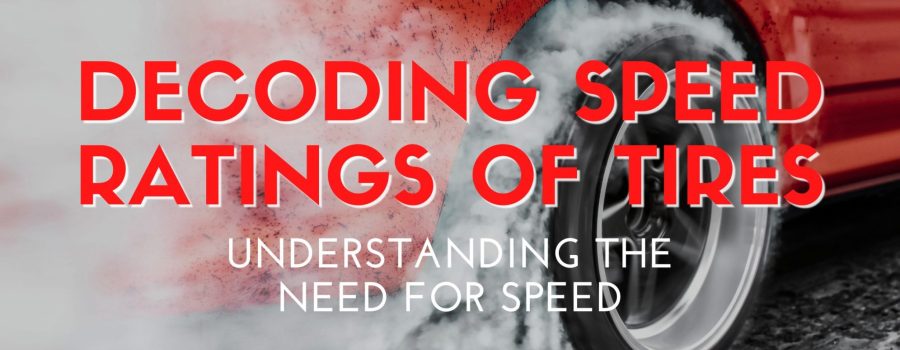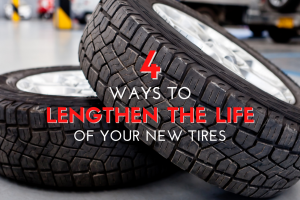Decoding Speed Ratings of Tires: Understanding the Need for Speed
When it comes to choosing the right tires for your vehicle, there’s more to consider than just size and brand. One crucial factor that often goes unnoticed is the speed rating. This alphanumeric code, imprinted on the sidewall of every tire, indicates the maximum speed capability of the tire when properly inflated and under load. Understanding speed ratings is essential for ensuring safety, performance, and longevity on the road. This helpful article explains speed ratings in more detail.
What is a Speed Rating?
Speed ratings were introduced to ensure that tires could safely support the speed capabilities of increasingly faster vehicles. Each rating corresponds to a specific maximum speed, beyond which the tire’s performance and integrity could be compromised. The speed rating is represented by a letter, typically ranging from “A” to “Y.”
Understanding the Code:
Let’s break down the speed rating code:
A: Up to 5 mph (8 km/h)
B: Up to 31 mph (50 km/h)
C: Up to 37 mph (60 km/h)
D: Up to 40 mph (65 km/h)
E: Up to 43 mph (70 km/h)
F: Up to 50 mph (80 km/h)
G: Up to 56 mph (90 km/h)
J: Up to 62 mph (100 km/h)
K: Up to 68 mph (110 km/h)
L: Up to 75 mph (120 km/h)
M: Up to 81 mph (130 km/h)
N: Up to 87 mph (140 km/h)
P: Up to 93 mph (150 km/h)
Q: Up to 99 mph (160 km/h)
R: Up to 106 mph (170 km/h)
S: Up to 112 mph (180 km/h)
T: Up to 118 mph (190 km/h)
U: Up to 124 mph (200 km/h)
H: Up to 130 mph (210 km/h)
V: Up to 149 mph (240 km/h)
W: Up to 168 mph (270 km/h)
Y: Up to 186 mph (300 km/h)
Choosing the Right Speed Rating:
Selecting a tire with an appropriate speed rating is crucial for safety and performance. While it might be tempting to opt for a tire with a higher speed rating than necessary, it’s essential to match the rating with your vehicle’s capabilities and intended use.
For everyday passenger cars and SUVs, tires with speed ratings of “S” (up to 112 mph) or “T” (up to 118 mph) are typically sufficient. These ratings offer a balance of performance and affordability, suitable for most driving conditions.
For high-performance vehicles or those driven at higher speeds, such as sports cars or luxury sedans, tires with ratings of “H” (up to 130 mph), “V” (up to 149 mph), or even “W” (up to 168 mph) may be more appropriate. These tires are engineered to withstand the increased stresses associated with higher speeds while providing superior handling and stability.
Safety First:
It’s essential to remember that the speed rating represents the tire’s capability, not a recommendation to exceed speed limits. Driving at excessive speeds not only poses a significant risk to safety but also accelerates tire wear and increases the likelihood of tire failure.
Regular maintenance, including proper inflation, alignment, and rotation, is crucial for ensuring the longevity and performance of your tires, regardless of their speed rating.
Ensure Optimal Safety!
In conclusion, understanding speed ratings is vital for selecting the right tires for your vehicle. By matching the rating to your driving habits and vehicle type, you can ensure optimal safety, performance, and peace of mind on the road. Remember, it’s not just about how fast your car can go—it’s about how safely you can get there.
Contact Us:
Postle Tire Barn specializes in tires of all sizes and speed ratings to fit virtually any car, SUV or light truck on the road. We are a family owned and operated tire and automotive shop located in Tuscaloosa , AL on Jug Factory Road behind McDonalds.
If you have questions about your vehicle’s tires and what the appropriate speed rating is for your vehicle, give us a call.





Recent Comments